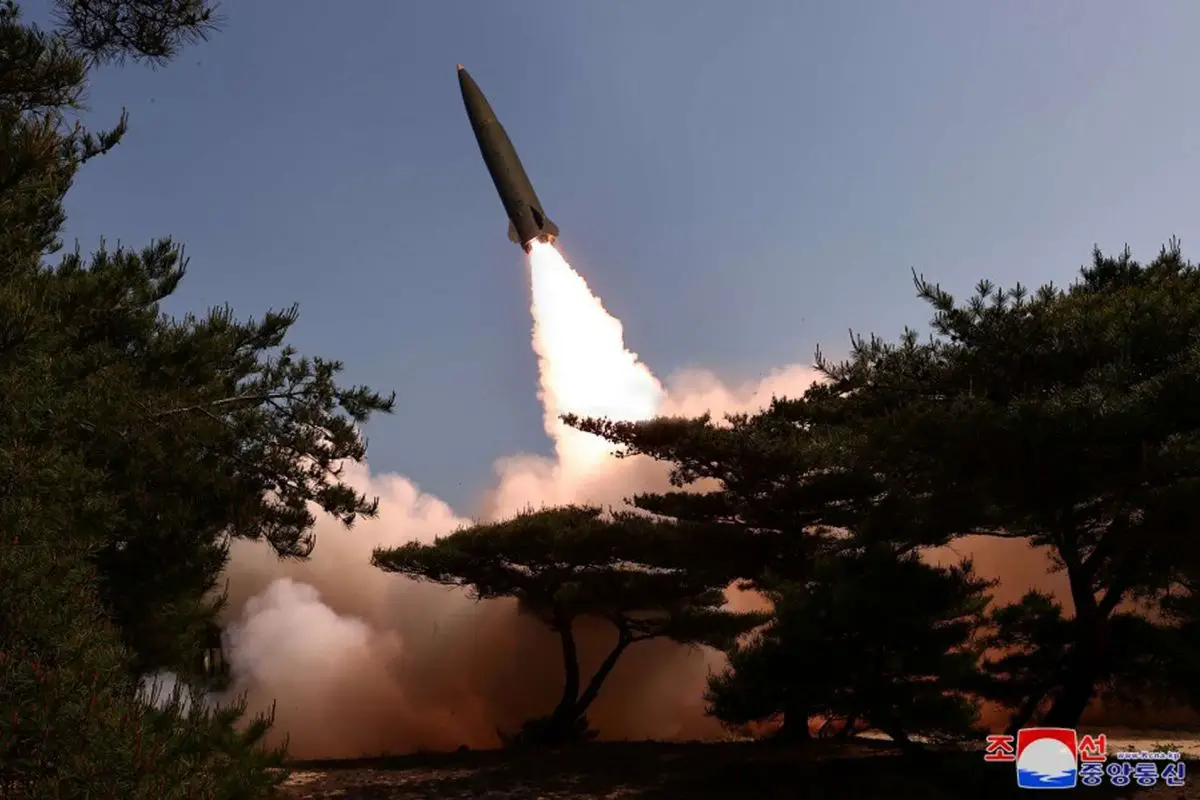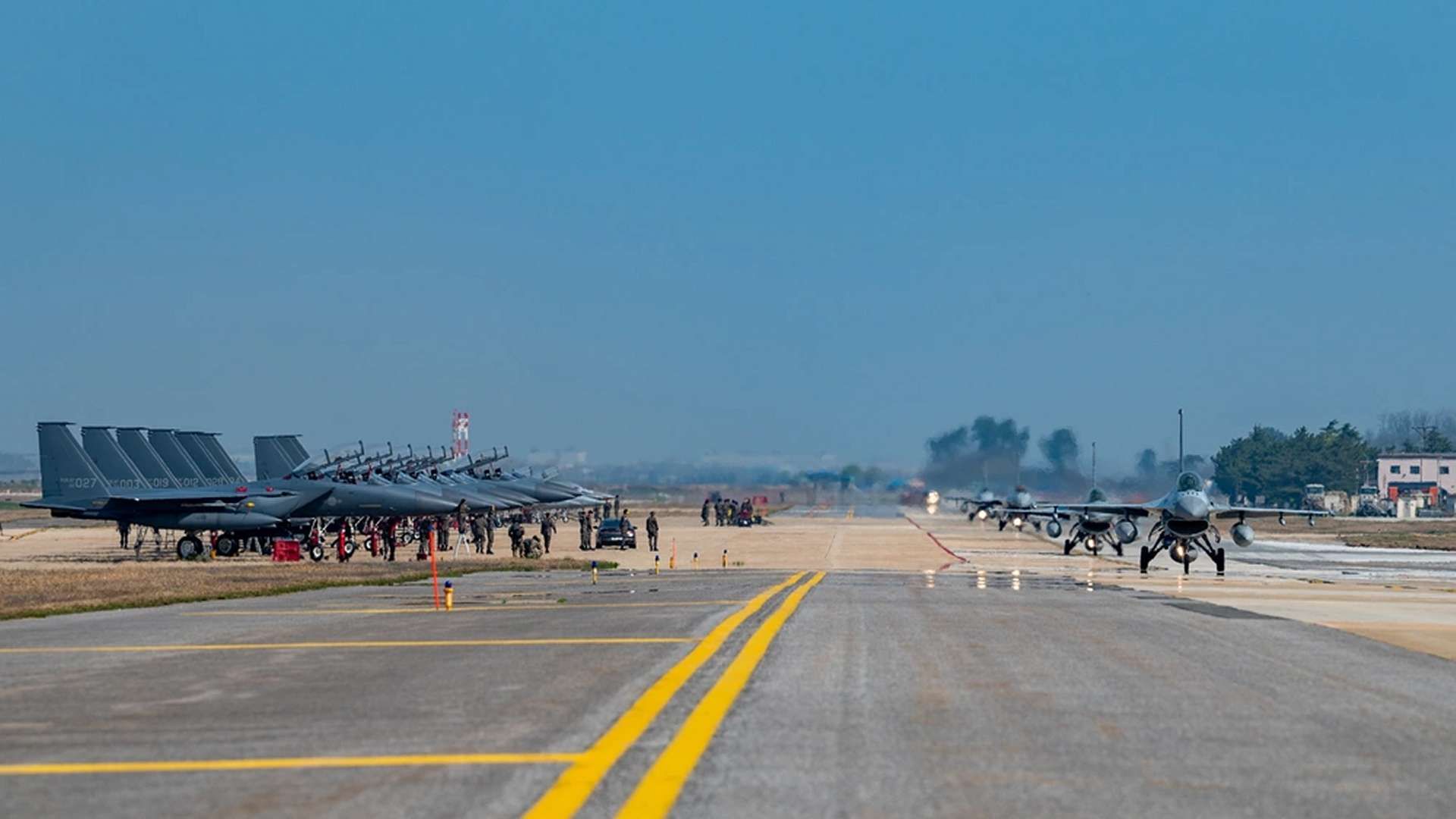Breaking news
North Korea tests new tactical ballistic missile with autonomous navigation system.
On May 18, 2024, North Korea announced the test-firing of a tactical ballistic missile equipped with a new autonomous navigation system, describing it as part of efforts to enhance its military capabilities. According to the Korean Central News Agency (KCNA), North Korean leader Kim Jong-un supervised the test, although specific details such as the number of missiles fired were not disclosed.
Follow Army Recognition on Google News at this link

North Korea announced the test-firing of a tactical ballistic missile equipped with a new autonomous navigation system, although specific details such as the number of missiles fired were not disclosed. (Picture source: KCNA)
The Korean Central News Agency (KCNA) reported that the accuracy and reliability of the new autonomous navigation system were confirmed through the test firing. The South Korean military also detected the launch, identifying it as several short-range ballistic missiles fired from Wonsan, a city on North Korea’s eastern coast. The missiles reportedly traveled approximately 300 kilometers before landing in the East Sea.
This recent test indicates an advancement in North Korea's missile technology. Previously, the range of North Korea's tactical guided weapons was believed to be between 100 to 110 kilometers. Shin Jong-woo, a senior researcher at the Korea Defense and Security Forum, noted that the 300-kilometer flight distance suggests that the missiles could target significant military facilities in South Korea. The test is part of North Korea's regular activities to advance its weapons systems, according to the North Korean Missile General Directorate. Kim Jong-un acknowledged the strategic value of the new guidance system and recognized the defense science and technology teams for their contributions.
This test follows the joint formation drill conducted by the U.S. and South Korea at Kunsan Air Base, which North Korea alleges was "inciting war fever" with an average of 100 sorties per day. The drills, which ran from April 12 to April 26, were portrayed as targeted at North Korea. Additionally, there were claims of a joint airborne infiltration drill by U.S. and South Korean Special Operations Forces (SOF) on Thursday, purportedly aimed at swiftly infiltrating any region to eliminate a target.

The exercise, named Korea Flying Training 2024 (KFT 24), involved various aircraft, including F-16 Fighting Falcons, F-35B Lightning IIs, A-10 Thunderbolt IIs, and E-3 Sentries. (Picture source: US DoD)
The exercise, named Korea Flying Training 2024 (KFT 24), involved personnel and aircraft from the U.S. Army, U.S. Air Force, U.S. Marine Corps, and the Republic of Korea Air Force. It formed part of the 7th Air Force’s annual training schedule, emphasizing the strength of the ROK-U.S. Alliance. Various aircraft, including F-16 Fighting Falcons, F-35B Lightning IIs, A-10 Thunderbolt IIs, E-3 Sentries, and others from both U.S. and ROKAF were showcased during KFT 24. The exercise aimed to enhance flying interoperability, readiness, and lethality, demonstrating the joint force's ability to deter, defend, and defeat any potential adversary.
North Korea's increased military activities, including the recent launch of cruise missiles, tactical rockets, and hypersonic weapons, suggest a strategic display of its capabilities as well as a response to these perceived threats from the United States and South Korea. Since January 2024, North Korea has introduced several new weapon systems, such as a new 240mm multiple rocket launcher system in February. In March, North Korea introduced the M2024 main battle tank, an upgraded version of the M2020 model. The new tank incorporates advanced technologies inspired by the U.S. M1A2 Abrams and the Russian T-14 Armata, including enhanced explosive reactive armor and anti-tank guided missile systems.
In April, North Korea conducted a test of a new hypersonic missile, the Hwasong-16B. Equipped with a hypersonic glide vehicle and powered by a solid-fuel engine—a shift from previous liquid-fuel engines—the test aimed to validate the missile system's technical specifications and reliability. The glide vehicle's advanced maneuverability and evasion capabilities were a particular focus. This development marks a significant stride in North Korea's missile technology and strategic military capacities.
Furthermore, as reported on May 16, 2024, North Korea has also increased its production of ballistic missiles, including the Hwasong-11D, following a possible request from Russia, as North Korea has recently supplied various military equipment to support Russian operations in Ukraine. The Hwasong-11D, a modified version of the KN-23 missile, has a range of 100 to 180 kilometers and features a quasi-ballistic trajectory for increased accuracy and evasion of missile defenses. State media reported the development of new tactical missile systems for the Korean People's Army, expected to be operational by the end of the year, which aim to enhance war readiness.

In March, North Korea introduced the M2024 main battle tank, an upgraded version of the M2020 model, incorporating enhanced explosive reactive armor and anti-tank guided missile systems. (Picture source: KCNA)


























